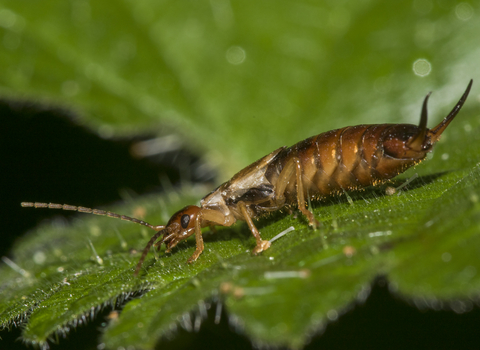
Common Earwig ©Chris Lawrence
Common earwig
Despite popular belief, and its name (from the Old English for 'ear beetle'), the Common earwig will not crawl into your ear while you sleep - it much prefers a nice log or stone pile! It feeds on organic matter, recycling important nutrients.
Scientific name
Forficula auriculariaWhen to see
January to DecemberSpecies information
Category
Statistics
Length: 1.3-1.8cmCommon.
